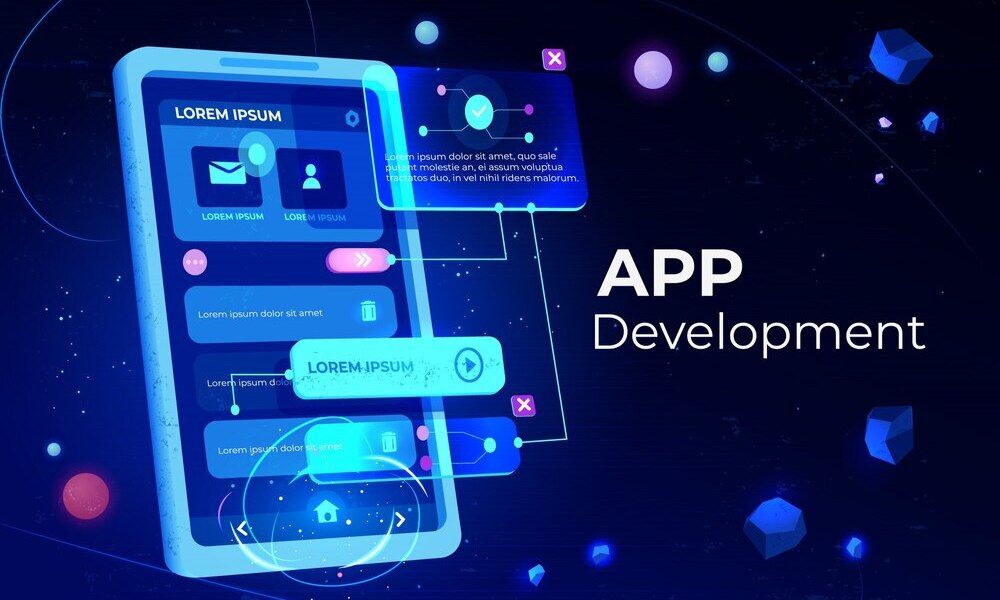The mobile app industry is booming, with Statista predicting global app spending to surpass a whopping $53 billion in 2025. To stay ahead of the curve, businesses need to be aware of the latest trends in mobile application development.
In this blog, we’ll delve into the hottest trends shaping mobile app development in 2025, along with inspiring examples of companies already putting these trends into action.
Five New Trends in Mobile Application Development in 2025
- Immersive Experiences with Augmented Reality (AR): AR overlays digital elements onto the real world, creating a captivating user experience. Imagine furniture companies allowing virtual placement of furniture in your home or makeup brands enabling virtual try-on features. IKEA Place leverages AR to let users see how furniture would look in their space before buying, while Sephora's Virtual Artist app lets users experiment with makeup virtually.
- Enhanced Security with Advanced Features: With the growing importance of data privacy, robust security is paramount in mobile application development. Fingerprint and facial recognition are becoming commonplace, and companies are implementing multi-factor authentication for added security. Fintech apps like PayPal and banking apps widely use fingerprint recognition for secure logins.
- Increased User Engagement with Beacon Technology: Beacon technology utilizes Bluetooth Low Energy (BLE) to transmit signals to nearby smartphones. Retailers can leverage beacons to send targeted promotions to customers in their stores, enhancing the in-store experience. Macy's utilizes beacon technology to send personalized coupons to customers browsing specific departments.
- Expanded Functionality with Mobile Payments: The ease and convenience of mobile payments are driving their widespread adoption. Integrating mobile wallets like Apple Pay and Google Pay into apps streamlines the checkout process, improving user experience. Starbucks app allows users to pay for their coffee purchases directly through the app.
- Progressive Web Apps (PWAs): PWAs offer app-like functionality without requiring installation from an app store. This reduces friction for users and allows businesses to reach a wider audience. Pinterest utilizes PWA technology, offering a seamless user experience even without installing the app.
Essential Practices for Mobile Application Development in 2025
In this dynamic environment, staying ahead of the curve is crucial for mobile application developers. Here are some key practices to consider in 2025:
- User-Centric Design: Understanding user needs and designing intuitive interfaces remains a cornerstone of successful mobile application development.
- Agile Development Methodologies: Agile methodologies allow for flexible and iterative development, enabling developers to adapt to changing requirements and user feedback quickly.
- Cloud Integration: Cloud computing offers scalability, storage, and processing power, making it an essential tool for modern mobile application development.
- Cross-Platform Development: Reaching a wider audience often means developing for both Android and iOS platforms. Cross-platform development tools can streamline this process.
Applications on the Rise
The types of mobile applications being developed in 2025 reflect the ever-changing needs and desires of users. Here are some of the most prominent categories:
- Fintech: With the growing popularity of cashless transactions, mobile applications for banking, investment, and money management are experiencing a surge. These applications leverage features like secure mobile payments and AI-powered financial advice to provide a seamless and personalized user experience.
- Health and Wellness: As people become more health-conscious, applications that promote healthy living are in high demand. These applications offer features like fitness tracking, calorie counting, and personalized workout routines. Integration with wearable technology further enhances user engagement.
- E-commerce: The dominance of online shopping continues, driving the development of sophisticated e-commerce applications. These applications offer features like one-click purchases, augmented reality product visualization, and chatbots for customer support, making the shopping experience more convenient and interactive.
- Super Apps: Super apps, which combine multiple functionalities within a single platform, are gaining significant traction in some regions. These all-encompassing applications offer users a one-stop shop for various tasks, from messaging and social media to ride-hailing and food delivery.
The year 2025 promises to be a pivotal year for mobile application development. With innovative applications emerging, new trends shaping the industry, and best practices evolving, the future of mobile app development is bright. Mobile applications are poised to revolutionize various sectors, from healthcare and finance to communication and entertainment. As enterprises embrace cutting-edge technologies and prioritize user experience, we can expect even more transformative applications to emerge in the years to come.






